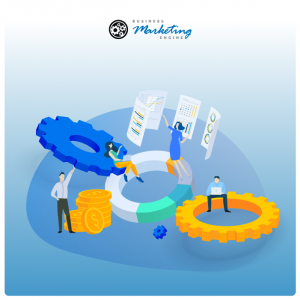Sales are the heartbeat of a business. If it’s going to thrive, you’ve got to make sales. This seems like common sense, but tons of businesses continue to neglect their silent salesperson.
This salesperson works non-stop representing the company, and in some cases will be the only interaction a potential customer has with the business.
Who is the silent salesperson? It’s the business’s website.
Which is why I get so frustrated every time I see a poorly made or ugly website. Don’t they know it’s costing them sales?
But I get it — most of us aren’t web designers. Not everyone knows what a website needs to earn business instead of costing opportunities.
If you’re worried that your website isn’t as awesome as it should be, let the following tips be your guide. They’ll help you figure out what your website needs to become the best salesperson on your staff.
Looks matter
When it comes to people, it’s what’s on the inside that counts. Websites are a different story. Looks matter. You should spend the time, 
This doesn’t mean that your website needs to look like every other successful site — in fact, it shouldn’t! Your website will be the first exposure to your business that many people experience, so make sure that it reflects your goals, products and services.
No one likes cookie-cutter websites! While design fundamentals will guide website builders during the process, the end results can exemplify exactly who you are and what you do. If you provide legal consultation for small businesses, your website should look a lot different than if you managed punk bands — but both websites should look great to the desired audience.
Make it easy to navigate
The biggest website design mistake that we see — and unfortunately we see it often — is websites that are difficult to navigate. It shouldn’t take hard work to get the information you’re looking for. If it is, visitors will search for easier options elsewhere.

Visitors will react the same way on your website. It doesn’t matter if your product or service will solve their problem better than anything else out there if they can’t figure out how to ask questions or commit to buy.
Make everything as easy to find as possible — no seeking and searching — using obvious breadcrumbs, links, menus and sidebars. A good web designer will know a variety of great ways to make navigating your site a breeze, without making it look busy or overcomplicated.
If you’re looking for a web designer that can help implement these strategies, we’d love to help. Check out our portfolio and reach out via our contact form for a free consultation.
Create content that solves problems
Your website works as a silent salesperson, always working for you, always trying to convert readers to customers. The best way to make that happen is by solving problems related to your industry.
We’ve found that publishing a weekly blog post provides an effective, reliable way to provide value to website visitors. It allows you to help them solve problems, while letting them learn about your business and see what you have to offer.
Some people worry about giving information away and solving problems for free. They question the idea — “Couldn’t I charge money for solutions like that?”
And of course, they could. But think of it like this. If someone solved one problem for free, and their solution worked incredibly effectively, wouldn’t you at least want to learn about their solution for your bigger, more serious problem?
Don’t worry about the problems that you solve for free — consider it an investment. By providing value to potential customers, some of them will decide to buy. Of course, not every website visitor will become a customer, but the goal isn’t to sell to everyone. It’s to sell to the people who need what you’re selling, and providing value for free will show them what you can do.
Don’t forget the technical stuff, like SEO, Security, and Load Speeds
There’s a ton that goes into designing a good website. From color selection, to well-crafted copy and everything in between. That’s the stuff you can see, like boats on the surface of the ocean. Just like the ocean however, there’s a whole lot going on beneath the surface.
SEO — search engine optimization — has become completely interwoven into the design and implementation of websites. While typically it’s the copy and formatting that make the biggest difference, these elements of your site should fit into the overall design.
Neglect SEO at your own risk. Sure, people can find your website by typing the web address and hitting the enter key, but if you don’t come up in a Google search, will new customers find your site?
Likewise, you’ll want to pay attention to your site’s security. This means managing potential spam comments and messages — which are annoying at best, and can cripple a site at worst. If you process sales on your website, you’ll want to ensure that your site is a secure HTTPS site with an SSL certificate. Otherwise, visitors will not trust your website to process their transaction.
Of course, load times play a big factor in the success of a website — nobody likes to sit and wait for a page to load. A good website designer will take steps to ensure that your site loads as quickly as possible, without sacrificing looks, ease of use or security.
This is just a few pieces of the technical machinery that happens behind the scenes. You don’t want to neglect this stuff, so make sure that whoever is on your website building team knows that you prioritize the technical as much as the beautiful.
Get help for your silent salesperson
We live in a world where anyone can build a website. Tons of DIY solutions are out there, and some of them are amazing. Some of them aren’t. Many of them will make you want to scream and pull your hair out.

Most of us don’t have the skills and experience to design and develop the perfect website, but we know what we want. After reading this, you probably have an idea of what you need.
All that’s missing is the right professional to build it.
We can help with that.
BME’s Design Shop has been hard at work helping professionals of all kinds create the perfect website, and we want to help you do the same. Check out our portfolio and reach out via our contact form to schedule a free consultation. We’ll talk to you about your business and how your silent salesperson can help you grow.




